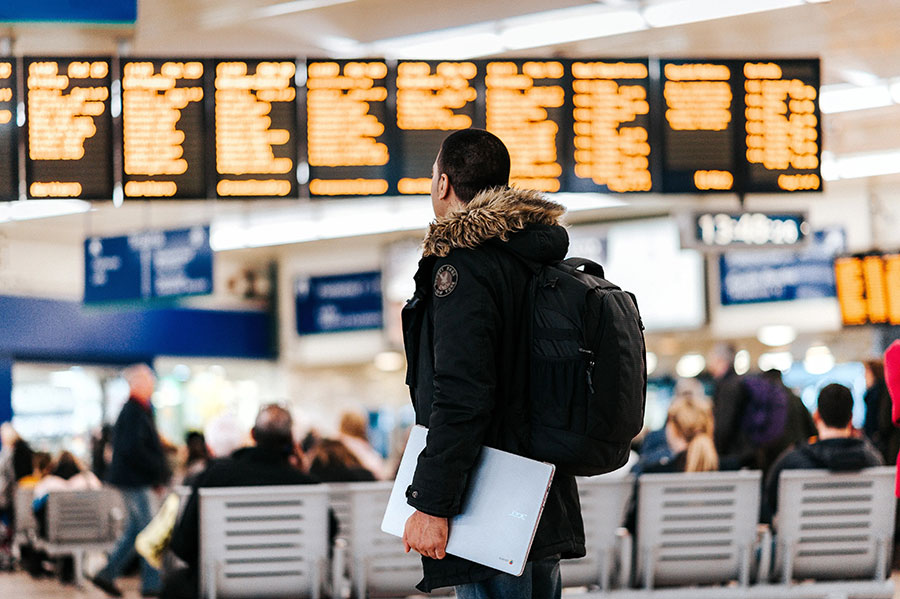What are ESTA and the Visa Waiver Program?

The Visa Waiver Program (VWP) and Electronic System for Travel Authorization (ESTA) have become crucial components in facilitating travel to the United States for citizens of participating countries. The VWP allows citizens of 39 countries to enter the US for up to 90 days without obtaining a visa, while the ESTA determines the eligibility of travelers to visit the US under the VWP. Both programs were established to enhance security measures while streamlining the entry process for travelers. In this article, we will explore the intricacies of the VWP and ESTA, and how they have impacted travel to the US.
What is the Visa Waiver Program?
The Visa Waiver Program (VWP) is a program that allows citizens of certain countries to travel to the United States for tourism or business for up to 90 days without obtaining a visa. This program was established to facilitate easier travel and promote international tourism and business relations. Currently, 39 countries are eligible for the VWP, including the United Kingdom, Germany, Japan, and South Korea. Travelers must have a valid Electronic System for Travel Authorization (ESTA) approval before boarding a flight to the U.S. under the VWP. The Visa Waiver Program has been instrumental in promoting travel and trade between the U.S. and participating countries.
What is an Electronic System for Travel Authorization?
The Electronic System for Travel Authorization (ESTA) is an automated system that determines the eligibility of visitors to travel to the United States under the Visa Waiver Program (VWP). It was developed to strengthen the security of the VWP and to make the process of entering the U.S. more efficient. Travelers from VWP countries are required to obtain an approved ESTA before boarding a carrier to travel by air or sea to the U.S. The application process is completed online and requires travelers to provide personal and passport information, as well as answer eligibility questions. ESTA authorization is generally valid for two years or until the traveler’s passport expires, whichever comes first.
The U.S. Department of Homeland Security oversees the VWP and maintains a list of countries whose citizens can apply for visa-free ESTA travel. This list includes countries like Chile, Australia, New Zealand, and most European and a few Asian countries. The Department of Homeland Security frequently updates this list, and as of September 29, 2023, they added Israel, allowing its citizens to participate in the VWP starting November 30, 2023. List of Visa Waiver Countries
It’s crucial to understand that an ESTA application and its subsequent authorization is not a visa. It doesn’t replace the legal requirements for a U.S. visa when one is necessary. For instance, travelers from VWP countries might still need a B-1/B-2 visa for business or pleasure travel longer than 90 days, a student visa for studying in the U.S., or an employment-based visa to work in the country.
The ESTA application process involves a fee of $25, with an additional $17 charged upon approval. The processing times for an ESTA application can be up to 72 hours. Once approved, travelers can enjoy visa-free travel to and from the U.S. during a two-year period, but each stay must not exceed 90 days.
Advantages and Disadvantages of Traveling to the United States Under the Visa Waiver Program (ESTA)
The Visa Waiver Program, facilitated by the ESTA, offers several benefits for qualifying travelers. However, these advantages come with certain trade-offs:
✅ Streamlined Online Application: Travelers from the Visa Waiver Program enjoy a hassle-free application process through the ESTA, eliminating the need for an in-person interview at a U.S. embassy or consulate abroad.
✅ Flexible Processing Times: Unlike the traditional visa process, which can take months, ESTA applicants usually receive a decision within 72 hours. This makes it a preferred choice for those planning last-minute travel to the U.S.
❌ Shorter Stays: Travelers using the VWP are restricted to stays of 90 days or less. In contrast, B-1/B-2 visitor visa holders can stay up to 6 months and have the option to apply for an extension in certain situations.
❌ No Change or Adjustment of Status: Those entering the U.S. under the VWP cannot adjust to permanent resident status or change their visa status during their stay. To obtain a different visa status or a green card, they must leave the U.S. and attend a consular interview in their country of citizenship.
Conclusion
The Visa Waiver Program (ESTA) provides an efficient way for travelers from participating countries to visit the U.S. for short business or pleasure trips without a visa. However, it’s essential to be aware of its limitations. Those looking to stay in the U.S. for more than 90 days or have plans beyond tourism or business should consult with an experienced immigration attorney to strategize their immigration journey.
Disclaimer: This article is for informational purposes only and should not be considered legal advice. Consult with a qualified immigration attorney before making any decisions related to travel or immigration.





